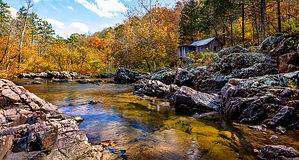Colorado has dozens of notable tree species dotting the state, from the mountains to the plains. But the quaking aspen is probably the most famous tree in the state. It is widely spread throughout the region and is one of the only native deciduous trees. If you see a tree on a Colorado logo or signage, it’s most likely an aspen. Check out these nine most iconic trees native to Colorado and discover their locations and distinct features.
1. Quaking Aspen

Quaking aspens is one of the most iconic trees native to Colorado
©Colin D. Young/Shutterstock.com
If ever there was a tree that perfectly summed up Colorado’s landscape, it would be the aspen. In fact, it is often seen as a symbol of Colorado. It grows in dense stands and features its characteristic cream-colored bark and heart-shaped leaves. And during the fall, they glow a fiery orange. You can find quaking aspens on the West Slope, primarily between 6,500 and 11,500 feet in elevation.
2. Colorado Blue Spruce

Colorado blue spruce is the state tree of Colorado
©Miraleks/Shutterstock.com
The Colorado blue spruce is naturally occurring in the Western United States and is one of the most popular ornamental conifers in Colorado. These evergreen trees reach up to 115 feet tall and feature their iconic bluish-green needles. The Colorado blue spruce is the state tree of Colorado and is native to the Rocky Mountains near streamside meadows. But they are widely planted landscape trees throughout the state.
3. Bristlecone Pine
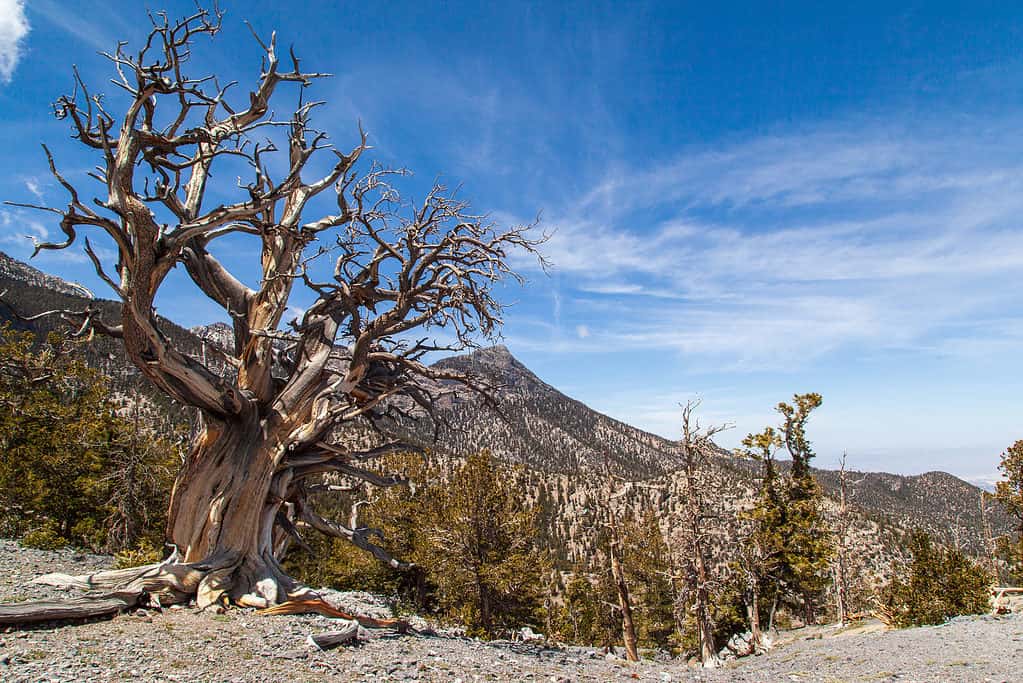
Bristlecone pines grow on exposed rocky slopes and mountain ridges
©iStock.com/Florian Schipflinger
The bristlecone pine is another iconic evergreen in Colorado, where it grows on exposed rocky slopes and mountain ridges, from 9,200 to 11,800 feet in elevation. Bristlecone pines grow up to 30 feet tall and feature light gray bark and dark green needles with white lines. Check out the Windy Ridge Bristlecone Pine Scenic Area in Alma, Colorado, where you’ll find a unique stand of ancient wind-sculpted bristlecone pines.
4. Douglas-Fir
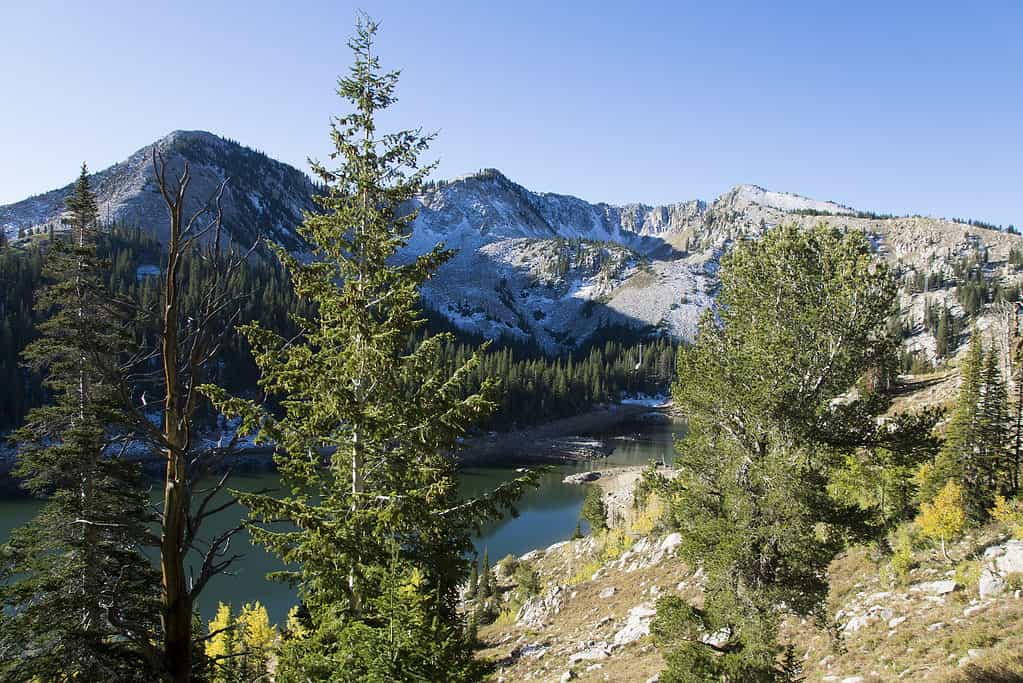
Douglas-fir can grow up to 130 feet tall
©IrinaK/Shutterstock.com
The Douglas-fir is an evergreen tree but not a true fir. It features smooth, gray bark and blue-green needles. Plus, this tree is very fragrant. They can grow up to 130 feet tall and primarily thrive on moist northern slopes in mixed or pure stands. These trees are native to the Rocky Mountain region and most commonly found in the foothills, lower mountains, and occasionally the subalpine zone.
5. Ponderosa Pine
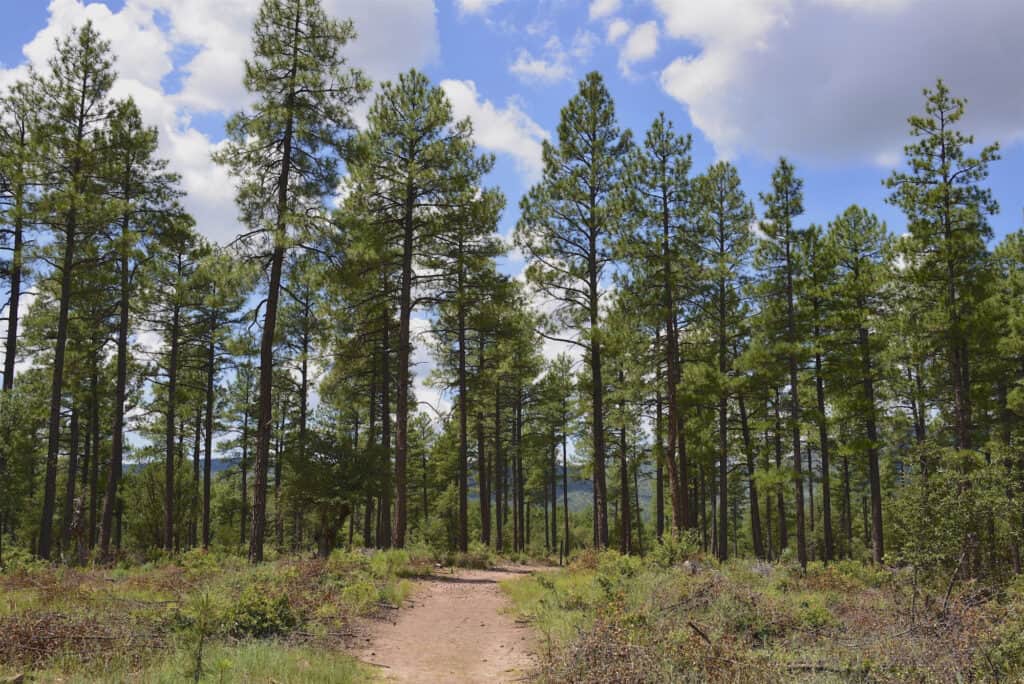
Widely distributed, ponderosa pines are some of the tallest pines around.
©SED Travel Photography/Shutterstock.com
The ponderosa pine occupies 8 percent of Colorado’s forested land or roughly two million acres. These trees are well adapted in low humidity regions of the West and dot Colorado prairies and shrublands before transitioning into ponderosa pine forests between 6,300 and 9,500 feet in elevation. Ponderosa pine grows up to 160 feet tall and features red-orange bark and dark yellow-green evergreen needles. This species likes dry soil in open pure or mixed stands.
6. Engelmann Spruce
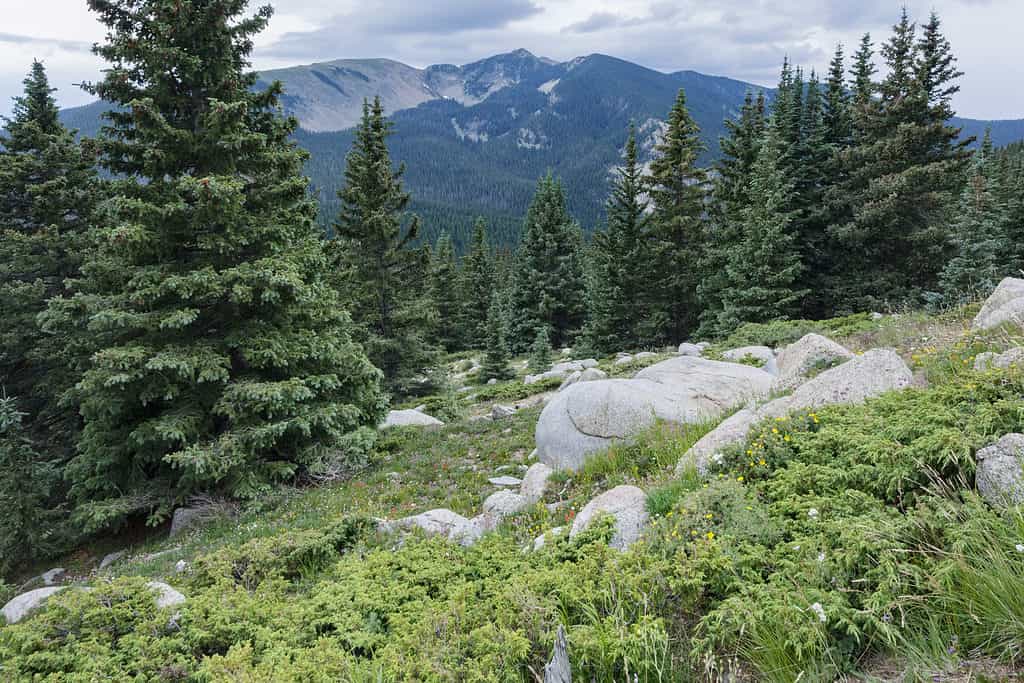
Engelman spruce is a major species found in Rocky Mountain forests
©Patrick Alexander from Las Cruces, NM, CC0, via Wikimedia Commons – Original / License
The Engelmann spruce likes cold, moist, and high-elevation forest environments, most prominently on Colorado’s northern slopes near conifers. It has thick grayish-brown bark and deep blue-green evergreen needles with white lines. This tree is a major species found in Rocky Mountain forests between 8,000 and 11,000 feet in elevation. Visit the Fraser Experimental Forest in Central Colorado to see some of the oldest Engelmann spruces over 800 years old.
7. Lodgepole Pine
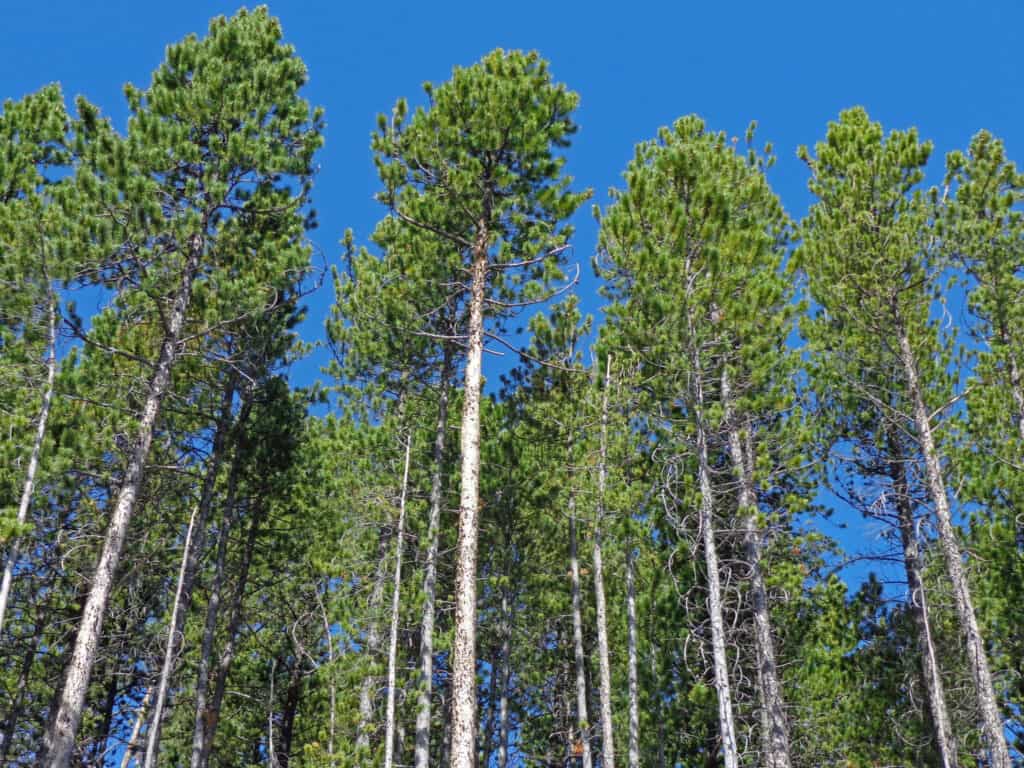
The lodgepole pine or Pinus contorta is one of the most common pine trees in North America.
©Sara Kendall/Shutterstock.com
Covering seven percent of Colorado’s forested land, roughly 1.5 million acres, the lodgepole pine is one of the most familiar species in the state. It grows up to 80 feet tall and features thin, light brown bark and yellow to dark green evergreen needles. This species grows in pure stands between 6,000 and 11,000 feet in elevation and is prominent in the subalpine and montane forests of the Northern Rockies.
8. Narrowleaf Cottonwood
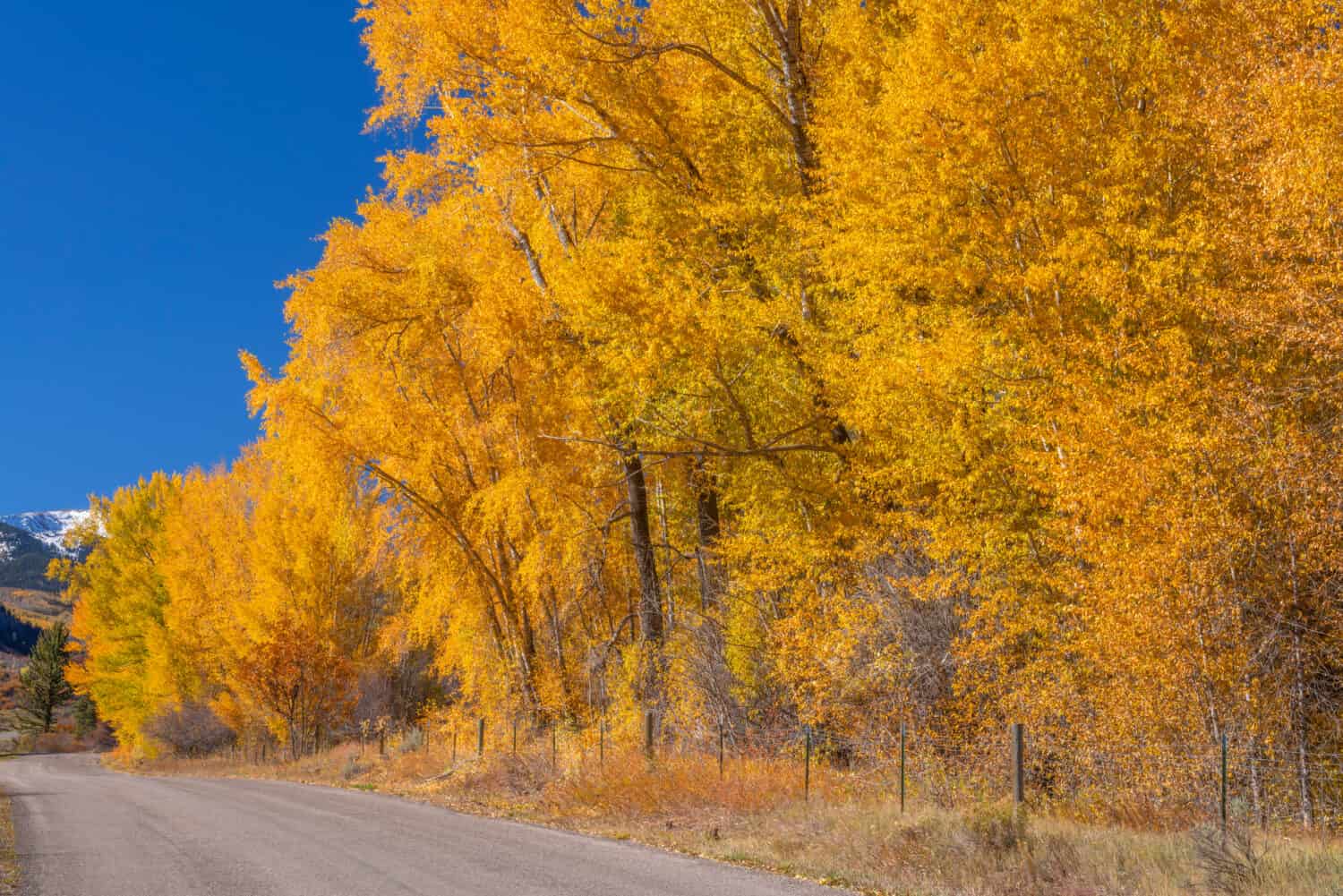
Narrowleaf cottonwood is common in moist soil along streams
©Danita Delimont/Shutterstock.com
Sometimes found growing near aspen trees, the narrowleaf cottonwood is a common tree in the state. It grows up to 60 feet tall and has thick, gray-brown bark when mature and broad, shiny green leaves. It thrives between 5,000 and 8,000 feet and is common in moist soil along streams, often in coniferous forests. You can also find them in metro areas near river and creek banks.
9. Pinon Pine

Pinyon pine is common near rocky foothills, mesas, and open woodlands
©Rexjaymes/Shutterstock.com
Famous for its crooked trunk, the pinyon pine occurs naturally in the Rocky Mountain region from Utah to Colorado. This tree grows up to 50 feet and features rough, red-brown bark and light green evergreen needles. You will commonly see pinon pines between 5,000 and 9,000 feet in open woodlands, mesas, plateaus, and rocky foothills.
The Most Iconic Trees Native to Colorado: A Recap of the Top 9
| Number | Trees Native to Colorado |
|---|---|
| #1 | Quaking aspen |
| #2 | Colorado blue spruce |
| #3 | Bristlecone pine |
| #4 | Douglas-fir |
| #5 | Ponderosa pine |
| #6 | Engelmann spruce |
| #7 | Lodgepole pine |
| #8 | Narrowleaf cottonwood |
| #9 | Pinyon pine |
Thank you for reading! Have some feedback for us? Contact the AZ Animals editorial team.






